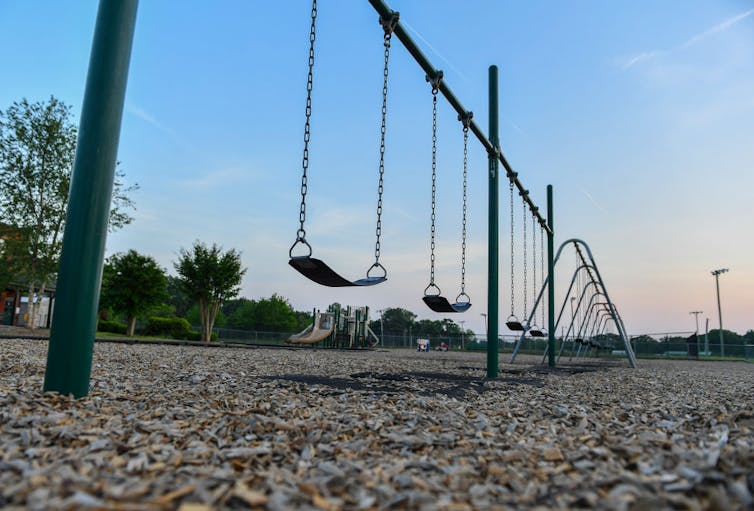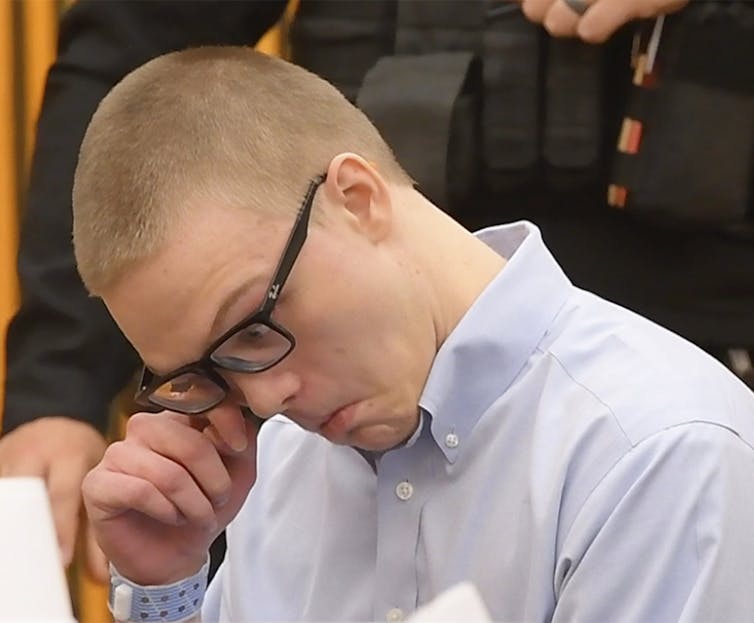A South Carolina judge heard arguments in late May 2023 to reconsider the sentence for Jesse Osborne, who carried out a school shooting in 2016. Fourteen years old at the time, Osborne killed his father, then opened fire at Townsville Elementary School, killing a 6-year-old child and injuring others.
He was sentenced to life without parole, but his attorneys have asked that a judge “give Jesse some hope” of leaving prison decades down the line. The judge ordered the defense to submit a detailed report by late June about abuse Osborne suffered as a child and his potential for rehabilitation. He said the prosecution would have 10 days to respond, though no decision has been announced as of mid-July.
At the heart of this case is whether it is appropriate to sentence children to die in prison, with no chance of being considered for release. Half a century ago, offenders in the U.S. of any age were rarely sentenced to life without parole, and it was not until 1978 that states began trying youths as adults. Between 1985 and 2001, however, youths convicted of murder were actually more likely to enter prison with a life sentence than adults convicted of the same crime.
Yet the use of juvenile life without parole, or JLWOP, has sharply declined over the past two decades and has been condemned by the American Bar Association, largely thanks to new research on brain development.
As a former prosecutor, I respect the need to consider victims’ perspectives. However, I also believe it is important to recognize that a 14-year-old child’s brain is far from fully developed, and that retribution and accountability must take that into account – ideas that guide my work today as a legal scholar who defends youth offenders.

The ‘superpredator’ era
In 1995, political scientist John J. DiIulio Jr. published an influential article arguing that the U.S. faced a wave of child “superpredators” who “prefer murder to mischief” and “perceive no relationship between doing right (or wrong) now and being rewarded (or punished) for it later.”
DiIulio blamed this predicted criminal conduct on the “moral poverty” of not having “loving, capable, responsible adults who teach you right from wrong.” He repeatedly called attention to violence among Black youths in “inner-city neighborhoods.”
While DiIulio coined the phrase “superpredator,” his message resonated with many Americans used to “war on drugs” and “tough on crime” campaigns. America’s history of marginalizing and criminalizing Black citizens primed the media and the public to accept his theory, as did several high-profile cases. The most notorious, perhaps, was that of the Central Park Five, in which five Black teenagers were wrongfully convicted of raping a white woman in Central Park in 1989.
Throughout the 1980s and 1990s, well before DiIulio’s article, states had already been establishing harsher sentencing laws, even for minors. Across the country, legislatures embraced trying children as adults and rejected policies focused on prevention and rehabilitation.
Between 1985 and 1994, the number of children tried as adults grew 71%, and by 2012, 28 states had mandatory life sentences for capital murder for certain minors.
The “superpredator” theory turned out to be a myth: By the end of the 1990s, youth crime had actually decreased, and that trajectory has continued. Between 2000 and 2020, the number of incarcerated youths fell by 77%.
By 2000, DiIulio had retracted the superpredator theory and was advocating for reform. Many laws from the “superpredator” era, however, are still on the books. The U.S. is still the only nation that sentences children to life without the possibility of parole.
Shifts at the Supreme Court
Nevertheless, a sea change has taken place in legal thinking, as psychologists have argued that teenagers are less culpable than adults because of the nature of adolescents’ brains.
Starting in the 2000s, the U.S. Supreme Court began to acknowledge that child offenders are different from adults. In 2005, the court banned the death penalty for people under 18, and in 2010 outlawed life sentences for juveniles convicted of nonhomicide offenses.
Two years later, in Miller v. Alabama, the court ruled that, even in homicide cases, mandatory sentences of life without parole for minors violate the Eighth Amendment’s prohibition of “cruel and unusual punishment.” The justices did not ban life sentences completely, however – simply mandatory sentencing laws that require them for juvenile homicide offenders, without consideration of the particular mitigating factors of each case.
In each of these decisions, the Supreme Court recognized that a lack of brain development makes adolescents, even those who commit serious and violent offenses, less culpable and more capable of change than adults. In Miller v. Alabama, the court emphasized that teenagers are impulsive, cannot escape abusive home environments, cannot properly assist their attorneys and have inherent capacity for rehabilitation.
State-by-state change
This change in attitudes has had clear impact on state laws. Today, a majority of states have now banned or have no one serving JLWOP.
More than 500 people who received their sentences before these SCOTUS cases are still serving life without parole for crimes they committed as children. However, another 1,000 individuals have been released because laws changed to override their original sentencing, according to the Campaign for the Fair Sentencing of Youth, which advocates against JLWOP.

Virginia, for example, passed legislation in 2020 to allow people sentenced as youth offenders who have already served 20 years in prison to seek parole consideration. Approximately 17 have been reviewed and granted parole so far, including seven rehabilitated individuals whom my law students and I have assisted.
Another aspect of adolescent development that research has emphasized is young offenders’ potential for rehabilitation, challenging the idea that they are irredeemably dangerous. One 2020 study found that only 1.14% of people who had been sentenced to life without parole in Philadelphia and eventually released were re-convicted of any offense. Similarly, out of 142 individuals released in Michigan after the Supreme Court’s Miller decision, only one had been rearrested as of 2021.
The path ahead
Nothing can bring back lives cut short. But in my more than 25 years working in the juvenile legal system, I have seen repeatedly that our society fails both defendants and victims by not helping them to resolve their conflicts before they get to that point. Those I assist as a defense attorney often come from the same environments and tragic backgrounds as the victims I served as a prosecutor.
Increasingly, however, it seems schools, courts and communities are turning to approaches besides life without parole to help young people move past the worst things they have ever done, or prevent them in the first place.
The primary focus of the juvenile court has always been rehabilitation rather than punishment. Courts now have improved assessment tools, effective intervention programs, a recognition of the roles lack of brain development and trauma play in delinquent behavior, and treatments for underlying psychiatric disorders that can help achieve that purpose – if our society has the will to invest in these resources as early as possible.

